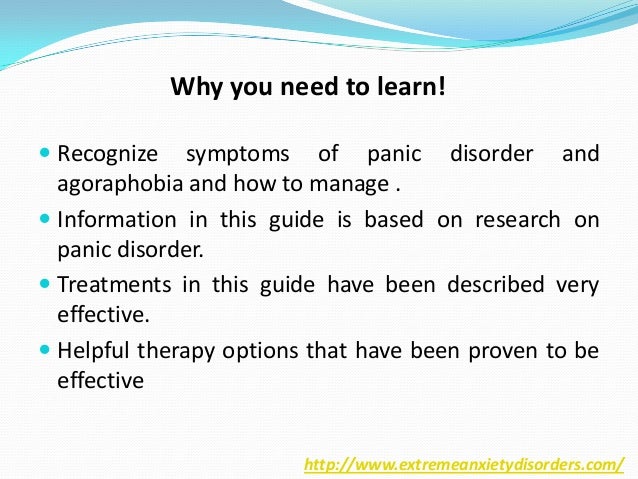Totke For Agoraphobia Treatment

Lifestyle changes and self-help techniques Learning more about agoraphobia and its association with and may help you control your symptoms better. For example, there are techniques you can use during a panic attack to bring your emotions under control. Having more confidence in controlling your emotions may make you more confident coping with previously uncomfortable situations and environments. These self-help techniques are described below.
Agoraphobia treatment reduces the agoraphobia symptoms, and gives you tools to get through difficult moments. Nowadays online agoraphobia treatment is becoming more popular, because people with agoraphobia don’t have to travel to the clinic for the agoraphobia treatment sessions.

• Stay where you are – try to resist the urge to run to a place of safety during a panic attack; if you're driving, pull over and park where it's safe to do so. • Focus – it's important for you to focus on something non-threatening and visible, such as the time passing on your watch, or items in a supermarket; remind yourself the frightening thoughts and sensations are a sign of panic and will eventually pass. • Breathe slowly and deeply – feelings of panic and can get worse if you breathe too quickly; try to focus on slow, deep breathing while counting slowly to three on each breath in and out. • Challenge your fear – try to work out what it is you fear and challenge it; you can achieve this by constantly reminding yourself that what you fear isn't real and will pass.
• Creative visualisation – during a panic attack, try to resist the urge to think negative thoughts, such as 'disaster'; instead, think of a place or situation that makes you feel peaceful, relaxed or at ease: once you have this image in your mind, try to focus your attention on it. • Don't fight an attack – trying to fight the can often make things worse; instead, reassure yourself by accepting that although it may seem embarrassing and your symptoms may be difficult to deal with, the attack isn't life threatening. Making some lifestyle changes can also help. For example, ensure you: • take – exercise can help relieve stress and tension and improve your mood • have a – a poor diet can make the symptoms of panic and anxiety worse • avoid using drugs and alcohol – they may provide short-term relief, but in the long term they can make symptoms worse • avoid drinks containing caffeine, such as tea, coffee or cola – caffeine has a stimulant effect and can make your symptoms worse. Guided self-help If your symptoms don't respond to these self-help techniques and lifestyle changes, your GP may recommend enrolling on a guided self-help programme. This involves working through self-help manuals that cover the types of issues you might be facing, along with practical advice about how to deal with them.
Nuance license. This site provides links to our self-service licensing pages. Thank you for using Nuance.
A number of internet-based programmes are also available. For example, is an online resource designed to help you think about emotional problems and work towards resolving them. Guided self-help for agoraphobia is based on CBT, which aims to change unhelpful and unrealistic patterns of thinking to bring about positive changes in behaviour. In turn, CBT uses a type of therapy called exposure therapy, which involves being gradually exposed to the object or situation you fear and using relaxation techniques and to help reduce your anxiety. Huong dan crack cad 2016. As part of the programme, you may have brief sessions with a CBT therapist – around 20 to 30 minutes long – over the telephone or face to face. You may also be invited to take part in group work with other people with a history of agoraphobia and panic disorders.
- четверг 01 ноября
- 21